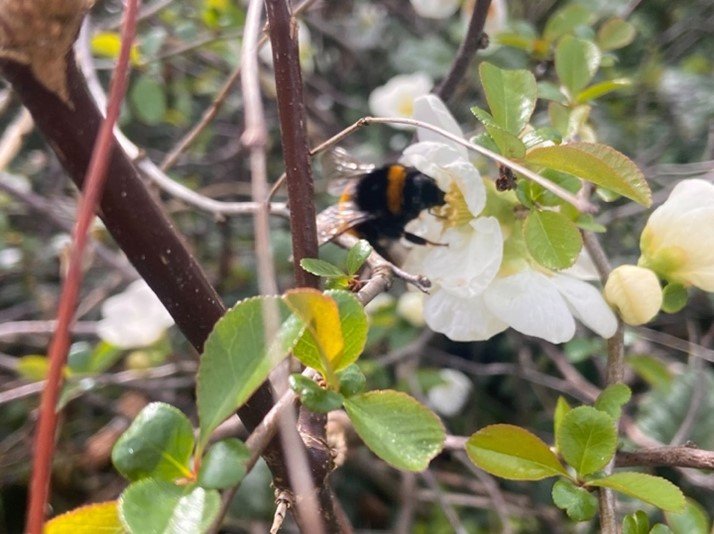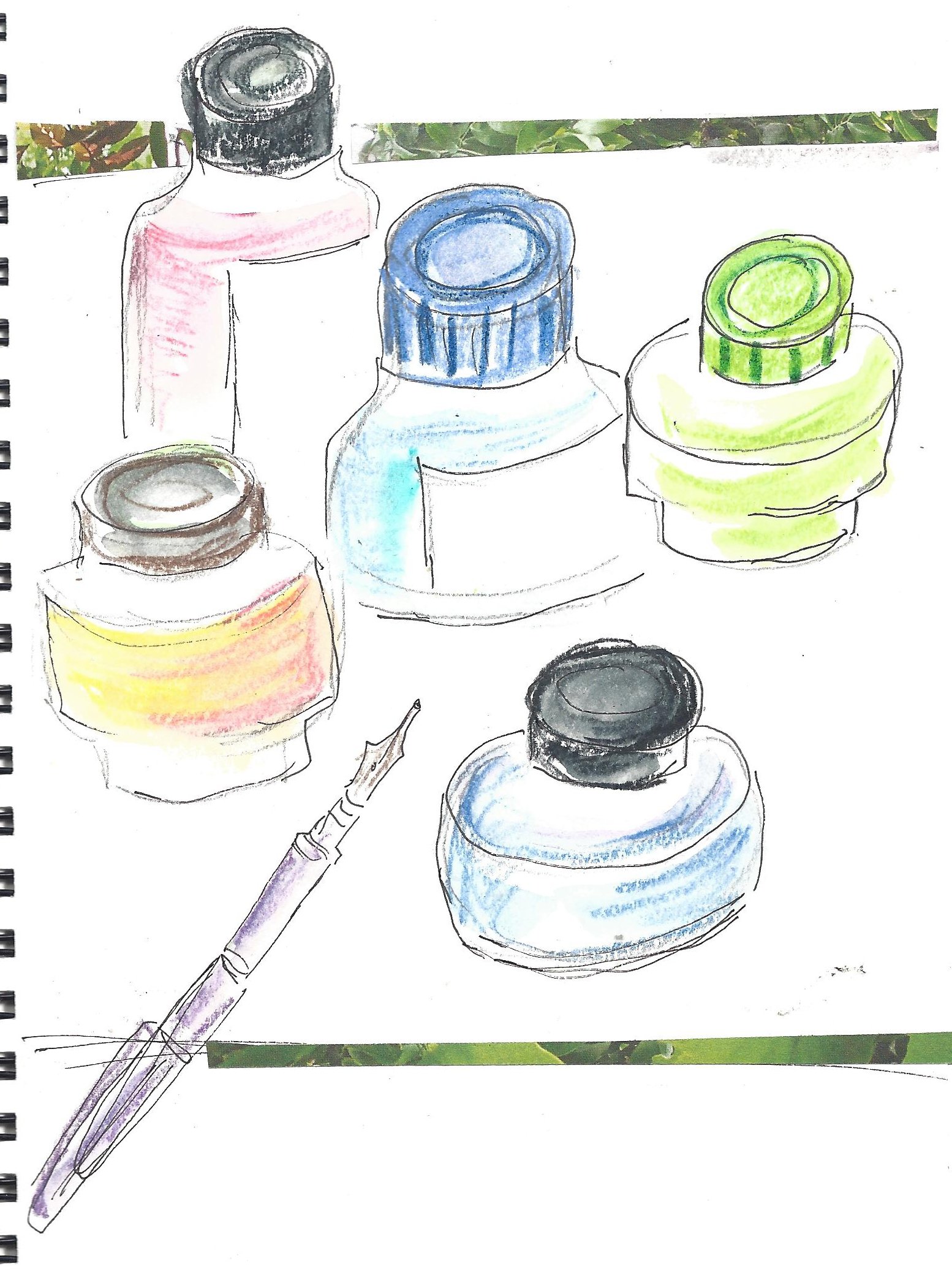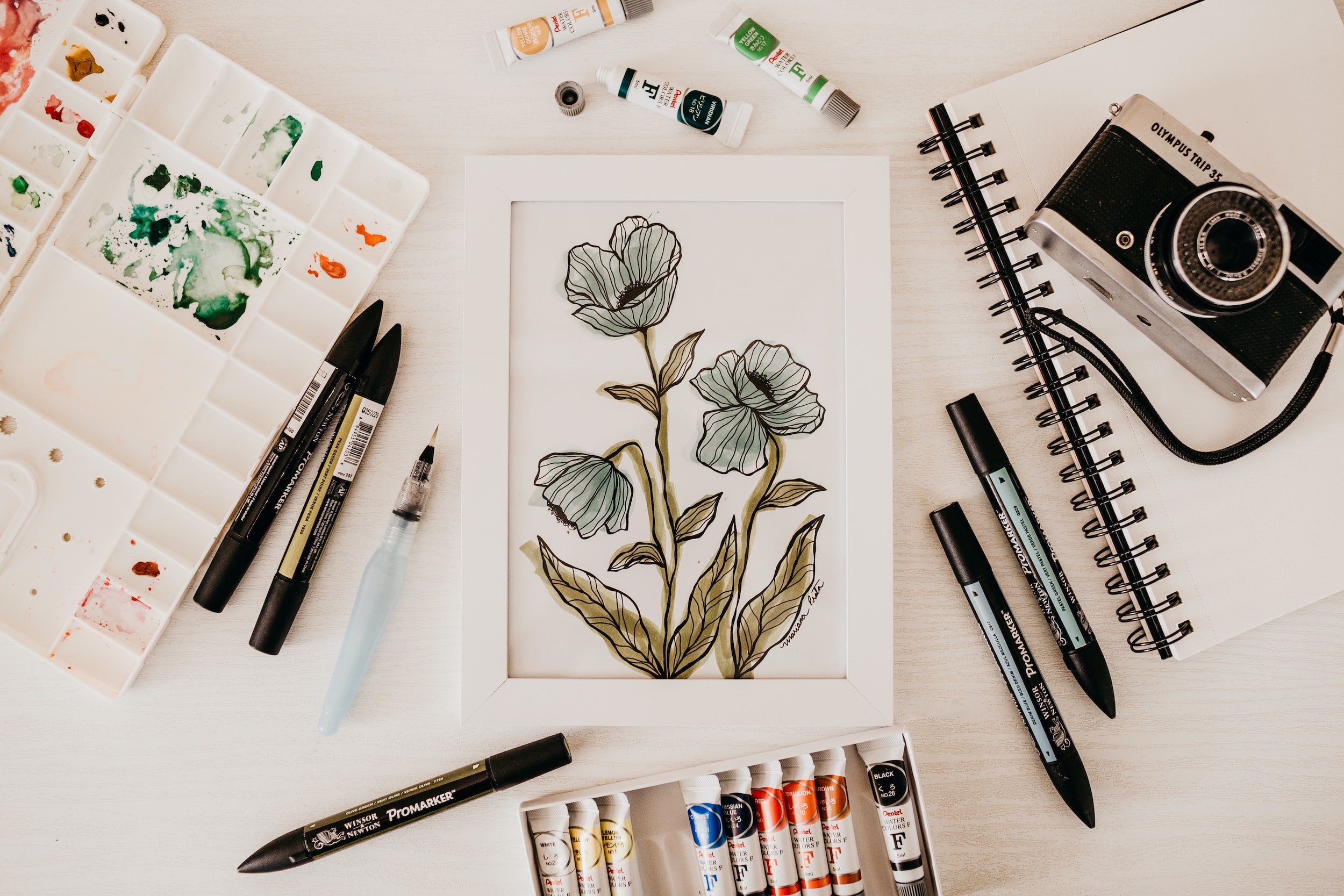Elicitation Interviews: Using Photos in Online Research
By Janet Salmons, PhD
Dr. Salmons is the author of Doing Qualitative Research Online, which offers guidance on using visual and creative methods online. Use the code COMMUNIT24 for 25% off through December 31, 2024 if you purchase research books from Sage.
Online communications are multimodal…and online interviews can be too.
Our online conversations, whether private or public, often revolve around photographs or media. We snap a picture and attach it to a text message: let me show you what I see. We comment on a video we saw on a social media site: this story resonates with me. We use the visual mode to build a sense of presence: you can’t be here to see my baby, this beautiful sunrise, or this pile of books I just bought, but we feel closer when we see the same images.
We want to share something about the people, the places, and/or the ideas that are important to us. Details, context, colors, facial expressions, relationships, would take time to describe. As the old saying goes, “a picture is worth a thousand words.” Typically, interviewers are accustomed to using words: we ask questions, we prompt follow-up responses, but the same principles of visual communication are true for research exchanges. Lapenta (2011) summarized:
The general consensus in this literature is that the use of images and/or film in the interview process elicits ‘deep and interesting talk’ (Harper, 2002: 23) on subjects otherwise too complex to explore (Rose, 2001; Pink, 2006). Photographs can convey contents that words can only approximately represent, and can represent subjects that might be invisible to the researcher but visible to the interviewee, triggering unforeseen meanings and interpretations (Schwartz, 1989). The nature of the method is also described as intrinsically collaborative (Banks, 2001; Pink, 2006). As originally noted by the Collier and Collier (1986), and later by others (Banks, 2001; Harper, 2002; Lapenta, 2004; Pink, 2006), interpreting the meanings of images can be explored in a conversation between the researcher and the respondent. Images can also be the response to a conversation, as when respondents are asked to photograph or film their own lives (Levy, 1991; Clark, 1999; Chalfen and Rich, 2004; Pink, 2006) to discuss their subjects and meanings later.
Conventional interview: Tell me about your family.
Photo elicitation interview with images from the researcher: Tell me how your family is similar or different from the one in this photograph.
or
Photo elicitation interview with images from the participant: Show me a picture of your family.
Researchers who want “deep and interesting talk” have two main options, and naturally, each has pros and cons:
Images from the researcher: The researcher can take or find photographs of the aspects of the phenomena they want to discuss. The advantage is that the researcher owns the rights, seeks permission, or selects royalty-free images and can thus use the photos in publications or presentations without revealing participants’ identities. The researcher will use them in a semi-structured style of interview: the same photos are used in all interviews, providing continuity across the study. The disadvantage is that participants might not identify with or relate to the photographs.
Images from the participant: The researcher invites the participants to generate photographs on a topic or in response to a prompt. Participants can submit the photos in advance of the interview, or share them during the interview. The interview style is less structured, since each participant discusses their own photos, meaning each interview will be unique. The advantage is that the photos are personalized to the participants’ experiences and perceptions, so will likely generate a rich discussion. The disadvantage is that when photos contain images of the participants and other people, they cannot be used in publications without jeopardizing anonymity.
Use photos to communicate with participants who are less verbal
As you can see from the selection of articles listed below, photo elicitation is a beneficial method for collecting data from participants who have cognitive problems. with children or youth, or with people whose first language is not shared by the researcher.
Photo elicitation goes digital
Images can be easily shared, viewed, and discussed in an online interview. Images can be sent in advance via email, text, shared online folder, or post in a forum. Interviewers using videoconference tools can share their screens so images are viewed together. Some of the examples below describe online research, other articles discuss approaches that can be ported into an online interview.
Lapenta, F. (2011). Some theoretical and methodological views on photo-elicitation. In The SAGE Handbook of Visual Research Methods (pp. 201-213). SAGE Publications Ltd, https://doi.org/10.4135/9781446268278
Research articles about photo elicitation
Bailey, K. A., Dagenais, M., & Gammage, K. L. (2021). Is a Picture Worth a Thousand Words? Using Photo-Elicitation to Study Body Image in Middle-to-Older Age Women With and Without Multiple Sclerosis. Qualitative Health Research, 31(8), 1542–1554. https://doi.org/10.1177/10497323211014830
Abstract. In this study, we explored how women with varying relationships to disability and aging used photographs to represent their body image experiences. Seven middle-aged and older adult women with and without multiple sclerosis were asked to provide up to 10 photographs that represented their body image and complete a one-on-one interview. We used reflexive thematic analysis to develop themes and interpret the findings. Overall, the women expressed not only complicated relationships with their bodies, represented through symbolism, scrutiny of body features (e.g., posture, varicose veins, and arthritis) but also deep reflection linked to positive body image and resilience. These findings revealed not only the nuanced experiences women have with aging, disability, and gender but also the commonly experienced ingrained views of body appearance as each participant illustrated a difficult negotiation with the aesthetic dimension of their body image. Finally, we provide important implications of the use of visual methods in body image research.
Epstein, I., Stevens, B., McKeever, P., & Baruchel, S. (2006). Photo Elicitation Interview (PEI): Using Photos to Elicit Children’s Perspectives. International Journal of Qualitative Methods, 5(3), 1-11. https://doi.org/10.1177/160940690600500301
Abstract. When conducting photo elicitation interviews (PEI), researchers introduce photographs into the interview context. Although PEI has been employed across a wide variety of disciplines and participants, little has been written about the use of photographs in interviews with children. In this article, the authors review the use of PEI in a research study that explored the perspectives on camp of children with cancer. In particular, they review some of the methodological and ethical challenges, including (a) who should take the photographs and (b) how the photographs should be integrated into the interview. Although some limitations exist, PEI in its various forms can challenge participants, trigger memory, lead to new perspectives, and assist with building trust and rapport.
Glaw, X., Inder, K., Kable, A., & Hazelton, M. (2017). Visual Methodologies in Qualitative Research: Autophotography and Photo Elicitation Applied to Mental Health Research. International Journal of Qualitative Methods, 16(1). https://doi.org/10.1177/1609406917748215
Abstract. Visual methodologies are a collection of methods used to understand and interpret images. These methods have been used for a long time in anthropology and sociology; however, they are a relatively new way to research for the majority of disciplines, especially health research. Two effective visual methodologies that could be used in health research are autophotography and photo elicitation. Autophotography is asking participants to take photographs of their environment and then using the photographs as actual data. Autophotography captures the world through the participant’s eyes with subsequent knowledge production. Photo elicitation is using photographs or other visual mediums in an interview to generate verbal discussion to create data and knowledge. Different layers of meaning can be discovered as this method evokes deep emotions, memories, and ideas. Photo elicitation interviews contribute to trustworthiness and rigor of the findings through member checking.
Kyololo, O. M., Stevens, B. J., & Songok, J. (2023). Photo-Elicitation Technique: Utility and Challenges in Clinical Research. International Journal of Qualitative Methods, 22. https://doi.org/10.1177/16094069231165714
Abstract. Photo-elicitation interview techniques, a method in which researchers incorporate images to enrich the interview experience, have been gaining traction in numerous spheres of research over the last two decades. Little is, however, written about the utility of the technique in studies involving vulnerable populations in clinical contexts. Drawing on research where researcher-generated photographs were used to elicit mothers’ experiences of pain and perceptions about use of pain-relieving strategies in critically ill infants, we aim to demonstrate (a) how the method can be used to generate harmonized and detailed accounts of experiences from diverse groups of participants of limited literacy levels, (b) the ethical and methodological consideration when employing photo-elicitation interview techniques and the (c) possible limitations of employing photo-elicitation interview techniques in clinical research.
Marshall, A. N., Walton, Q. L., Eigege, C. Y., Daundasekara, S. S., & Hernandez, D. C. (2023). Comparing In-Person and Online Modalities for Photo Elicitation Interviews Among a Vulnerable Population: Recruitment, Retention, and Data Collection Applications. International Journal of Qualitative Methods, 22. https://doi.org/10.1177/16094069231205794
Abstract. The purpose of the current study was to use Orsmond and Cohn’s feasibility framework to compare two methods of collecting photo elicitation interviews: (1) in-person and (2) online among low-income community college students. We described the feasibility of the recruitment and retention procedures and compared the participants’ characteristics and the type of data obtained by data collection modality. Focus group participants (n = 34) were invited to participate in photo elicitation interviews regarding barriers to food access and associated material hardships. Prior to the pandemic, photo elicitation interviews were conducted in-person. Due to pandemic-related stay-at-home policies, photo elicitation interviews shifted to a video conferencing platform. Descriptive and bivariate analyses were used to compare the two data collection methods in terms of sample characteristics, the average length of each interview, and the number and type of photos submitted. Of 34 recruited participants, 28 participated in photo elicitation interviews (82.4% response rate; n = 13 in-person; n = 15 online) with a mean age of 39.75 years (range: 19–62). No significant differences were found in socio-demographic characteristics between interview modality groups. In both online and in-person photo elicitation groups, participants were more likely to be female, non-Hispanic Black, single, and unemployed. Overall, both modalities were found to be feasible to recruit and retain participants and collect data from low-income, community college students. We found similar data in terms of photographs, and similar codes and themes were generated from the interview data across both modalities. Using both modalities provided an opportunity to promote equity in research through inclusion of hard-to-reach populations who may experience barriers to participation such as transportation or childcare. This study can inform recruitment and retention efforts for quantitative and qualitative research, and data collection efforts for photo elicitation interviews. The lessons learned are critical to generating rich data and advancing research conducted among vulnerable populations.
Platzer, F., Steverink, N., Haan, M., de Greef, M., & Goedendorp, M. (2021). The Bigger Picture: Research Strategy for a Photo-Elicitation Study Investigating Positive Health Perceptions of Older Adults With Low Socioeconomic Status. International Journal of Qualitative Methods, 20. https://doi.org/10.1177/16094069211040950
Abstract. Research focussing on older adults of low socioeconomic status (SES) faces several methodological challenges, including high rates of non-response and drop-out. In addition, older adults of low SES tend to be less willing to participate in research and are more likely to experience cognitive impairments and literacy problems. Photo-elicitation studies do not require high levels of literacy, and they might therefore be suitable for use in research with older adults of low SES. To date, however, little is known about setting up such studies with this target group. Our aim was to demonstrate how we systematically set up a researcher-driven photo-elicitation study to generate greater insight into the positive health perceptions of older adults of low SES. Our strategy consisted of three phases: development, testing and execution. In this article, we discuss each step of the research strategy and describe the limitations and strengths of our study. We also formulate recommendations for further research using photo-elicitation methods with this target group. Based on the results of this study, we conclude that the use of researcher-driven photo-elicitation is a powerful tool for enhancing understanding with regard to positive health perceptions and experiences of older adults of low SES. The usefulness of the method is particularly dependent on the careful development and testing of the study.
Poku, B. A., Caress, A.-L., & Kirk, S. (2019). The Opportunities and Challenges of Using Photo-Elicitation in Child-Centered Constructivist Grounded Theory Research. International Journal of Qualitative Methods, 18. https://doi.org/10.1177/1609406919851627
Abstract. In the last three decades, there has been a growing interest in listening to children’s voices in child health research. Ensuring an appropriate level of dialogical engagement with children calls for participatory methods. Auto-driven photo-elicitation interviews (PEIs) are a powerful approach to obtain rich data from children. This article discusses the opportunities and challenges of using auto-driven PEIs in a health-related child-centered constructivist grounded theory study conducted in a poor-resourced country. Our experience shows that while the approach is effective for facilitating co-construction of data with children and for addressing the ethical and methodological issues associated with child-centered research in the context of a developing country, it is narrow on its own. Broadening the term to “picture-elicitation interviews” to allow for the inclusion of other forms of images would make the method more adaptable and inclusive. This would give children the flexibility of choosing pictorial options that best suit them and also help child participants and researchers address the practical and cultural challenges associated with the use of auto-driven PEI in a poor-resourced country.
Raby, R., Lehmann, W., Helleiner, J., & Easterbrook, R. (2018). Reflections on Using Participant-Generated, Digital Photo-Elicitation in Research With Young Canadians About Their First Part-Time Jobs. International Journal of Qualitative Methods, 17(1). https://doi.org/10.1177/1609406918790681
Abstract. Participant-generated photo-elicitation usually involves inviting participants to take photographs, which are then discussed during a subsequent interview or in a focus group. This approach can provide participants with the opportunity to bring their own content and interests into research. Following other child and youth researchers, we were drawn to the potential of participant-generated photo-elicitation to offer a methodological counterweight to existing inequalities between adult researchers and younger participants. In this article, we reflect on our use of one-on-one, participant-generated photo-elicitation interviews in a Canadian-based research project looking at young people’s earliest paid work. We discuss some of the challenges faced when it came to gaining institutional ethics approval and also report on how the method was unexpectedly but productively altered by participants’ use of publicly accessible Internet images to convey aspects of their work. Overall, we conclude that participant-generated photo-elicitation democratized the research process and deepened our insights into young people’s early work and offer some recommendations for future photo-elicitation research.
Tonge, J. et al. “Using Photo-Elicitation to Explore Place Attachment in a Remote Setting.” Electronic Journal of Business Research Methods 11.1 (2013): 41–50. Web.
Abstract. People are often attracted to unique natural environments, but what makes them continually return to these locations, especially when considerable time and effort are required to get there? This paper discusses the methods and findings of a research project aimed at identifying and exploring how visitors develop an attachment to the remote Ningaloo Marine Park in north-western Australia. This Marine Park attracts a high percentage of repeat visitors (55%) and in order to determine the complex aspects contributing to this attachment, photo-elicitation was employed. Photoelicitation is a qualitative technique where participants are asked to take photographs relating to the concept under study, and these are then used as triggers for underlying memories and feelings during a subsequent interview. For this study, participants were provided with digital cameras to take photographs of why they like visiting the Ningaloo Reef and what it was that made them return. Given this remote location and the inability to get photographs developed in reasonable timeframes, digital cameras were used instead of the disposable cameras more commonly used in this type of study. After a few days, the cameras were returned, and photographs uploaded on the researcher's laptop computer with interviews conducted while viewing the photographs. Over a period of four weeks, during the peak visitor period, 30 participants took over 200 photographs and provided over 15 hours of interview recordings. Key aspects contributing to place attachment included the beauty of the physical environment, reef and marine based activities, social bonding with family and friends and enjoying a challenging though rewarding experience. By using a technique familiar to people on holidays, i.e. taking photographs, a method was invoked that people could engage with easily without the research impinging on their holiday experience.
Zhang, Y., & Hennebry-Leung, M. (2023). A Review of Using Photo-Elicitation Interviews in Qualitative Education Research. International Journal of Qualitative Methods, 22. https://doi.org/10.1177/16094069231185456
Abstract. Educational research has sometimes been criticized for its seeming lack of relevance to classroom reality and its subsequent inability to inform pedagogical practices. Such criticism has prompted researchers to consider research methods that may better approximate reality. Among these methods, photo-elicitation interviews (PEI) offer a visual dimension to elicit lived experiences, feelings, and thoughts in real educational contexts, and to enhance researchers’ understanding of educational practitioners’ and students’ experiences in real classrooms and school communities. This review examines the application of PEI to explore educational practitioners’ and students’ lived experiences and perceptions in educational contexts. Specifically, this paper examines the existing educational studies adopting PEI in order to identify the affordances of the method, the challenges it has presented for researchers in the education field, and critical considerations for researchers who may be planning to use the method. Specifically, this review addresses the following three questions: 1. What has PEI contributed to previous investigations of participants’ lived experiences and perceptions in educational contexts? 2. What methodological challenges have previous researchers encountered when utilizing PEI? and 3. How can methodological concerns be addressed when designing and implementing PEI to understand participants’ lived experiences and perceptions? We provide an up-to-date critical examination and discussion of PEI to better inform researchers seeking to develop the use of the method in future investigations in the education field.



































Academic writing is not always writing! Pictures and media enliven our writing, and can be important for showing concepts and contexts.